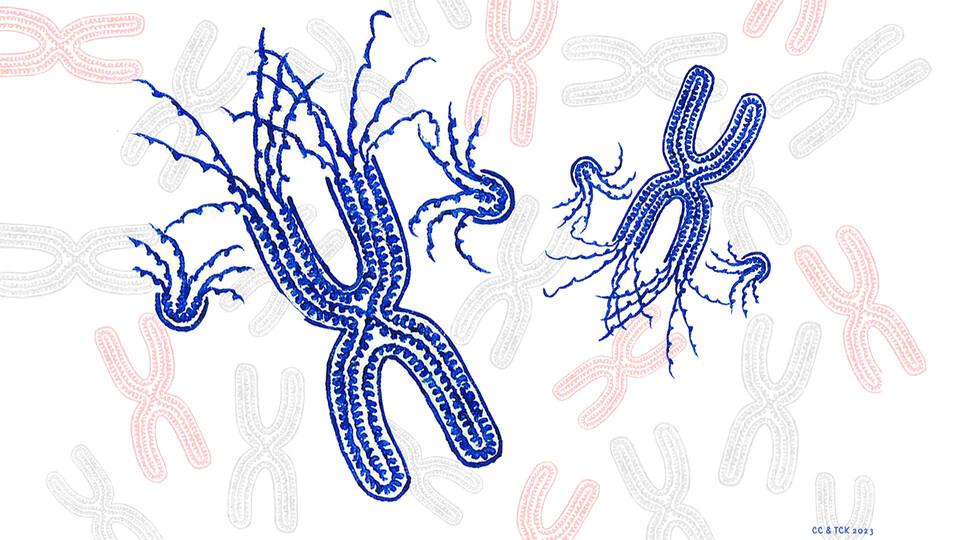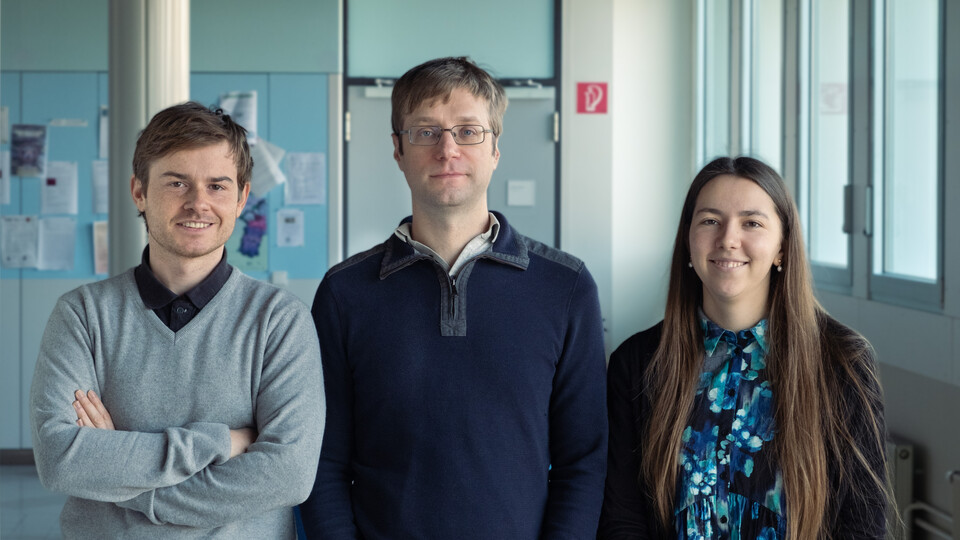

The number of chromosomes in organisms varies widely, from only 1 in certain ants, to 46 in humans, to hundreds in some plants. However, the wrong number of chromosomes leads to decreased cellular fitness and developmental errors in many organisms. In human development, chromosome losses are lethal and only a few chromosome gains are viable. Conversely, 90% of solid tumors and 70% of hematopoietic cancers are characterized by chromosomal instability and aneuploidy. Scientists have previously shown that certain aneuploidies can be advantageous to the tumor and that human cancers have characteristic aneuploidy patterns, but the forces behind the selection of these patterns are poorly understood.
To recapitulate aneuploidy patterns, the scientists combined a few ingredients: a mitotic surveillance mechanism, a drug, and time. First, a former postdoc in the Campbell lab, Manuel Alonso Y Adell, treated six different cell lines with a drug called reversine. This molecule is a potent inhibitor of a mitotic kinase that controls the spindle assembly checkpoint (SAC), a mitotic quality control mechanism. The SAC prevents chromosome segregation during cell division until all the chromosomes are attached to the mitotic spindle, thereby ensuring equal segregation of the chromosomes into the two daughter cells. By inhibiting the SAC, the scientists were able to induce chromosome mis-segregation and observe how aneuploidies form over time. They soon found familiar patterns: “The chromosome gains that we see across our different cell lines correlate with many of the patterns seen in cancer,” explains group leader Christopher Campbell.
The scientists then set out to identify the genetic basis behind the selection of certain aneuploidies. They focused on a pattern of chromosome losses that confers resistance to reversine, thereby helping cells exposed to chromosomal instability to survive. But where to start looking for the responsible genes? “Our initial guess was wrong”, says shared first author, and PhD student in the Campbell lab, Tamara Klockner. “The thinking in the field is that the main reason for chromosome arm losses in cancer is that they contain tumor suppressor genes, but when we deleted these genes, it did not confer any growth benefit.” The researchers then used CRISPR/Cas9 based gene scissors to systematically chop off different parts of chromosome arms until the team could narrow down the responsible genes.
This study represents the first time that specific genes responsible for the selection of aneuploidy have been identified in human cells. The ability to recapitulate aneuploidy patterns and engineer chromosomes in human cells is also an important step towards determining the forces behind these patterns. A remaining challenge is to identify the molecular basis for the chromosome gains found in both cancer and the scientists’ experiments, as it is technically difficult to engineer chromosome gains. “With our approach, we may now have a tool to be able to study how cells benefit from gaining those chromosomes”, concludes Christopher Campbell.
Publication:
Manuel Alonso Y Adell, Tamara C. Klockner, Rudolf Höfler, Lea Wallner, Julia Schmid, Ana Markovic, Anastasiia Martyniak, Christopher S. Campbell: Adaptation to spindle assembly checkpoint inhibition through the selection of specific aneuploidies . Genes & Develpment 2023
http://genesdev.cshlp.org/content/early/2023/03/01/gad.350182.122